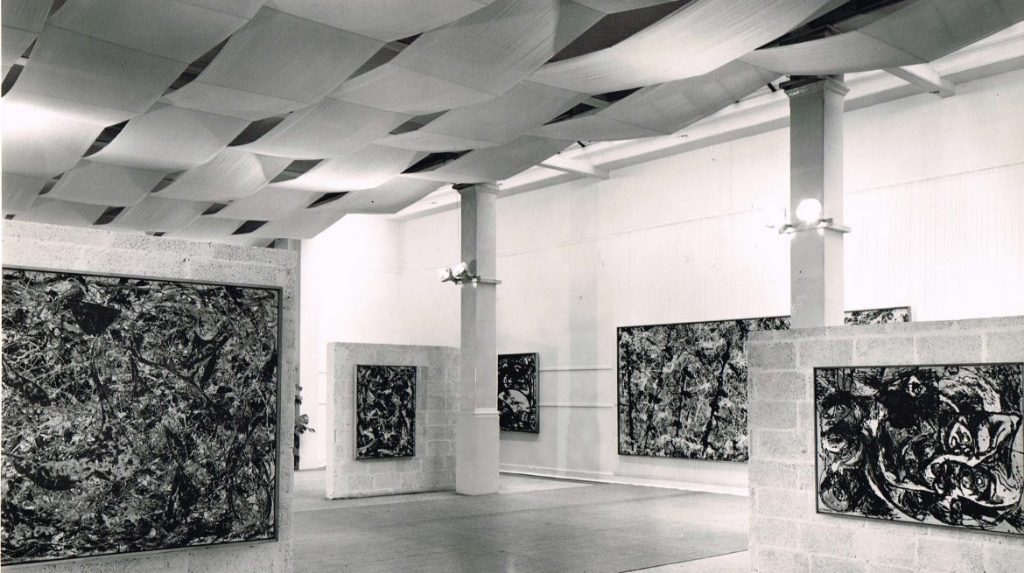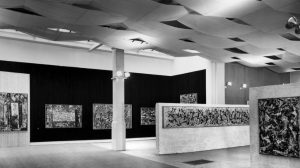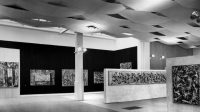Staging Jackson Pollock at Whitechapel Gallery

Paint dripped, thrown, poured. Blue, yellow, black, a hint of ochre. Five metres of paint-strewn raw canvas in a simple wooden frame, stretching across the expanse of a gallery wall. Jackson Pollock’s Summertime 9A (1948) is a breathtaking slice of the artist’s most innovative period, encapsulating some of his most daring ideas in a beautiful whole.
In 1958, the painting was one of 58 works shown at the Whitechapel Gallery as part of the first-ever exhibition of Pollock’s work in the UK. This bold introduction to American Abstract Expressionism both bewildered and excited the British viewing public.
The show felt unexpected, not least because the gallery’s then-director Bryan Robertson invited the modernist architect Trevor Dannatt to entirely redesign the exhibition space to house the US painter’s work. Dannatt’s renovation drew attention to modes of displaying art, erasing the space’s traditional features and replacing them with white walls and freestanding breeze block walls, creating a modern-industrial “white cube” aesthetic that has influenced how art is presented ever since.
60 years later, Staging Jackson Pollock is a new display at the Whitechapel that delves into the importance of this seminal exhibition. One wall features the stunning Summertime 9A, a painting that benefits from prolonged engagement; try to go at a quiet time for a chance of contemplating it alone. The piece is complemented by archival materials relating to its 1958 British debut, exploring the importance of the work in its radical architectural setting through a series of intriguing photographs and letters, along with a new audio interview with Trevor Dannatt.
The result is a small but powerful exhibition that offers a glimpse into the gallery’s rich history, and a reaffirmation of how shocking and new Pollock’s work was when it was first shown here 60 years ago.
Anna Souter
Photo: Sam Lambert
Staging Jackson Pollock is at Whitechapel Gallery from 4th September until 24th March 2019. For further information visit the exhibition’s website here.



























Facebook
Twitter
Instagram
YouTube
RSS